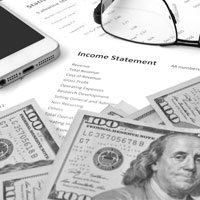 Contact
About Us
Articles
Home
Contact
About Us
Articles
Home

Retirement is a big step. It’s not just a lifestyle change. You are transitioning from the accumulation phase of life to the drawdown phase of life. It means you won’t have your full-time income from work to rely on anymore.
It’s prudent to protect your nest egg from a variety of risks that threaten your retirement.
Here are some of the most significant:
Market sentiment can turn against you at any time. Before the market crash in the first quarter of 2020 caused the COVID-19 pandemic, we were in a very mature bull market that lasted more than a decade – since 2009. That’s one of the longest on record. In hindsight, the start of the year would have been a good time to consider taking some profits by moving some stock holdings to less volatile asset classes, or to holdings with built-in guarantees to protect you against market volatility.
Meanwhile, you’ll need some income to live on. Common ways to generate a reliable income without having to rely on selling stock shares include:
This risk is closely related to market risk. Sequence of returns risk is the risk of a stock market crash occurring just before or shortly after you enter retirement. Unless you take steps to insulate your stock holdings, you may be forced to sell stocks at the worst time possible – just to have money to live on.
This means you have fewer shares pumping out dividends, and fewer shares left to actually participate when the market recovers. Unless you can go back into the workforce, it’s very difficult to recover from this.
As you approach retirement, it may be prudent to take some money out of your stocks and stock funds. With the proceeds, you can purchase safer, more reliable income-generating assets. You can even guarantee an income for life to cover your basic needs. This not only may help create peace of mind when markets turn south; it can also help protect your stock holdings, so you aren’t forced to sell at the wrong time.
You may also consider creating a “buffer asset,” that can act as a strategic reserve to supplement your income in the event stocks decline. A good buffer asset should have a compelling rate of return over and above cash, as well as little or no correlation with stock market performance – so that it’s unlikely to decline at the same time as the stock market, when you need it most.
Two excellent candidates for this buffer asset include whole life insurance cash values, and/or a home equity line of credit. Both can provide some tax-free cash flow to supplement your existing income sources in the event stocks fall while you’re in retirement – protecting your longer-term holdings so that they’re intact when markets recover.
It’s tempting to go to an all-cash, money market or CD portfolio as you enter retirement. That protects you from stock market risk, of course. But it leaves you vulnerable to another serious risk: inflation.
Inflation is an insidious threat that can eat away at your purchasing power in retirement. A 3% inflation rate will cut your spending by 25 percent about every 10 years. After about 20 years, your spending power would be cut by half, compared to when you retired.
Social Security can help – it comes with an annual cost-of-living adjustment (COLA). But your Social Security COLA isn’t enough by itself. Other ways to hedge against inflation include:
All of us face a substantial risk of needing long-term care services, such as assisted living or nursing home care. Some 7 out of 10 people reaching age 65 this year are likely to require long term care at some point in their lives. According to the 2019 Genworth Cost of Care Study, the cost of a semi-private room in a skilled nursing facility now exceeds $90,000 per year, on average, nationwide.
Medicare does not cover long-term care. Medicaid only kicks in after you spend down your assets to poverty level. You would need to pay for it out of private savings, family assistance, or you can protect yourself by owning long-term care insurance.
Long-term care insurance may come with inflation protection (with the purchase of a rider). Qualified long-term care premiums may be tax deductible. They can also help protect your home and other assets from seizure by state Medicaid asset recovery officials.
You may also qualify for hybrid life insurance/long-term care or annuity/long-term care products that provide additional protection and flexibility.
Individual long-term care insurance is medically underwritten. There are no protections for pre-existing conditions. You have to be in good health when you apply. So don’t delay applying: A health scare or negative event can make it difficult or impossible to qualify for long-term care insurance.

People are living longer and longer into retirement. This means your retirement portfolio will need to generate income for many years longer than your grandparents lived. It’s vital to have some sources of income that you can never outlive.
Social Security is a good start – especially if you can delay taking benefits until age 70, which provides a much greater monthly benefit than if you started taking benefits at age 62 or even at full retirement age at 66 or 67 for many people.
However, Social Security may not be enough to maintain your lifestyle.
Fortunately, if you’ve saved diligently all these years, you should be able to purchase a guaranteed income for life. If you’re married, you can get a guarantee that your monthly income will last as long as either one of you lives. You cannot outlive this income.
Longevity protection can come in the form of an immediate annuity – the income starts right away – or in the form of a longevity insurance policy. This is a guarantee of an income that starts at a certain age and lasts for life, or for the joint lifetimes of you and your spouse/significant other.
Tax bracket risk is the risk that Congress could increase taxes in the future in a way that will impact your retirement income. With the national debt soaring rapidly, and both Social Security and Medicare facing severe shortfalls, the likelihood is high that Congress will be looking at ways to increase tax revenue – some of it coming from retirees.
You can hedge against tax rate risk by diversifying into tax-free sources of income. Examples include Roth IRA assets, life insurance cash value, municipal bonds and reverse mortgage income. Life insurance and the judicious use of trusts can also help protect against changes in the estate or inheritance tax.
Stocks have plummeted from record levels. Today’s retirees face an elevated risk of ongoing stock market volatility. Sequence of returns risk may be especially dangerous. And longevity, interest rate and inflation risk have not gone away – nor has the risk of needing long-term care as you or your partner age. It’s important to take steps to protect yourself from these potentially catastrophic circumstances.
Alliance America is an insurance and financial services company. Our financial planners and retirement income certified professionals can assist you in maximizing your retirement resources and help you to achieve your future goals. We have access to an array of products and services, all focused on helping you enjoy the retirement lifestyle you want and deserve. You can request a no-cost, no-obligation consultation by calling (833) 219-6884 today.


